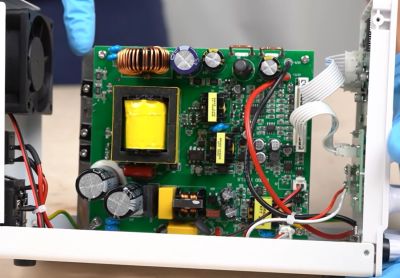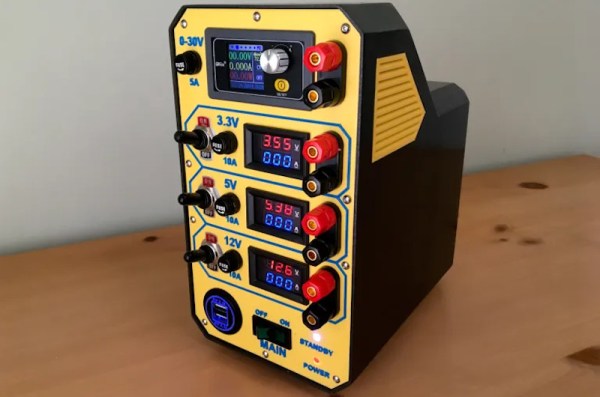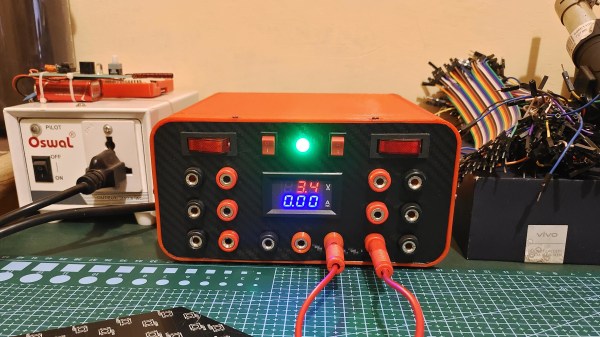Fnirsi is one of those brands that seem to pop up more and more often, usually for portable oscilloscopes and kin. Their IPS3608 bench power supply is a bit of a departure from that, offering a mains-powered PSU that can deliver up to 36 VDC and 8 A in a fairly compact, metal enclosure. Recently [Joftec] purchased one of these units in order to review it and ended up finding a few worrying flaws in the process.
One of the claims made on the product page is that it is ‘much more intelligent than traditional power supplies’, which is quite something to start off with. The visual impression of this PSU is that it’s somewhat compromised already, with no earth point on the front next to the positive and negative banana plug points, along with a tilting screen that has trouble staying put. The USB-C and -A ports on the front support USB-PD 3.0 and a range of fast charge protocols
The ‘intelligence’ claim seems to come mostly from the rather extensive user interface, including a graphing function. Where things begin to fall apart is when the unit locks up during load testing presumably due to an overheating event. After hooking up an oscilloscope, the ripple at 1 VDC was determined to be about 200 mV peak-to-peak at 91 kHz. Ripple increased at higher voltages, belying the ’10 mV ultra-low ripple’ claim.
A quick teardown revealed the cause for the most egregious flaw of the unit struggling to maintain even 144 Watt output: a very undersized heatsink on the SMPS board. The retention issues with the tilting issue seemed to be due to a design choice that prevents the screen from rotating without breaking plastic. While this latter issue could be fixed, the buggy firmware and high ripple on the DC output make this €124 ‘285 Watt’ into a hard pass.
Continue reading “Fnirsi IPS3608: A Bench Power Supply With Serious Flaws”



















